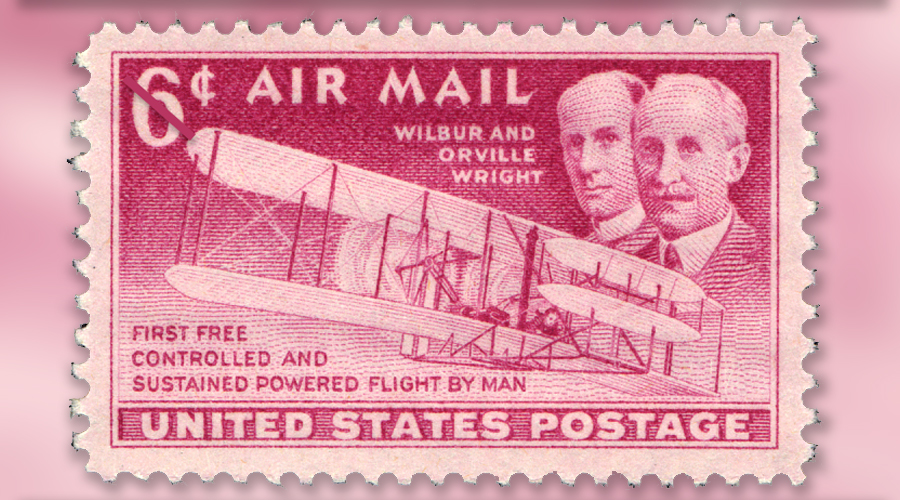Every year, the week containing Aug. 19 — Orville Wright’s birthday — is celebrated as National Aviation Week. Here are five facts about aviation landmarks and pioneers and their postal connections:
1. The most famous stamp in philately is an airmail goof. A 1918 stamp featured the image of a Curtiss JN-4 or Jenny, the plane used to deliver the first airmail letters. The 24-cent stamp pictured a Jenny in blue ink framed in rose red, a two-color printing scheme that made a production goof more likely. In 2018, 100 years after its printing, an inverted Jenny fetched $1.593 million at auction.
2. The Wright brothers are top stamp honorees. Wilbur and Orville Wright have been honored with more U.S. postage stamps than any other aviation figures. The first was a 2-cent issue that served double duty by marking both the 25th anniversary of the brothers’ first flight as well as an event designed to honor it, the 1928 International Civil Aeronautics Conference in Washington, DC.
3. Airmail gave Charles Lindbergh his start. Upon completion of a rigorous Army aviation program (he was first in his class), Lindbergh needed to look for civilian work because the Army wasn’t hiring pilots at the time. He accepted a job as a pilot on the first contract airmail route, from Chicago to St. Louis. It was while flying the mail that Lindbergh decided to enter a contest offering $25,000 for the first nonstop New York-Paris flight. The Spirit of St. Louis (which was funded by nine investors from St. Louis) flew into aviation history with Lindbergh in the cockpit in May 1927.
4. Unofficial mail raised Amelia Earhart’s profile. The first woman to fly solo nonstop across the Atlantic took off from Newfoundland, Canada, on May 20, 1932, and landed near Londonderry, Northern Ireland, about 15 hours later. She took along 50 pieces of unofficial mail — “postmarked” souvenirs of the historic flight. The sale of philatelic souvenirs helped finance many of her adventures.
5. A postal worker lifted a pioneering aviator from obscurity. Bessie Coleman achieved many firsts in her amazing life. She was the first Black woman and first known woman of Native American ancestry to earn a pilot’s license, which she obtained in France in 1921 because of race and gender bias in the United States. The famous stunt pilot, who would only perform for desegregated crowds, dreamed of opening a flight school for African Americans but died before she could make it a reality. Her niece Marion Coleman, a retired USPS employee, had her own dream: a stamp honoring Aunt Bessie. That dream was realized in 1995 with the 18th stamp in the Black Heritage series.
